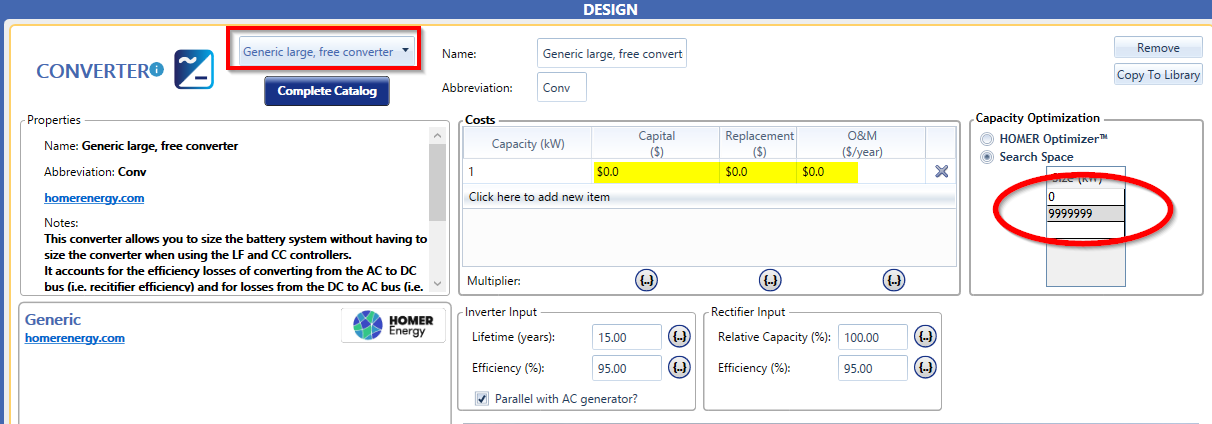
HOMER Pro 3.16

The built-in controllers for HOMER require that all batteries are located on the DC bus. For some designs, particularly for larger microgrid and island grid systems, you may want to interconnect components via the AC bus. This can also be a useful approach when you are in very early design and want to get quicker answers, since getting rid of the need to size the converter will enable you to get faster results.
If you are using the cycle charging (CC) or load following (LF) controllers, you will need to select the "Generic large, free converter". This is because these controllers do not support batteries on the AC bus. Select the Generic large, free converter in the quick-pick drop-down, and keep a large number greater than the amount of power you would expect to transfer between the buses (such as 9999999). Make sure all of the costs in the cost matrix are set to $0. You can now add a battery and HOMER will treat it like it is on the AC bus, except that it will account for efficiency losses for transferring energy from the AC to the DC bus (i.e rectification) and from the DC to the AC bus (i.e. inversion). Under this approach, you will want to make sure that your battery includes the costs for any equipment to interconnect the battery to the AC bus.

If you are using the Generator Order Dispatch controller or developing your own controller using one of the HOMER APIs, you can create an AC battery directly in the HOMER UI. There is no need to add a "large, free" converter (unless you would like to compare results with the LF or CC controllers). To include an AC battery with these controllers, add a controller that support AC batteries, and when you add a battery a new option will appear to put the battery on the AC bus in the battery component. You will want to ensure that your battery includes the cost for any AC/DC conversion internal to the component, as well as account for any efficiency losses in the battery's roundtrip efficiency.
